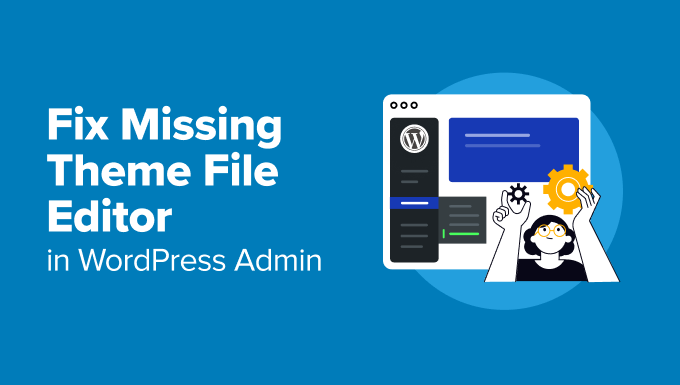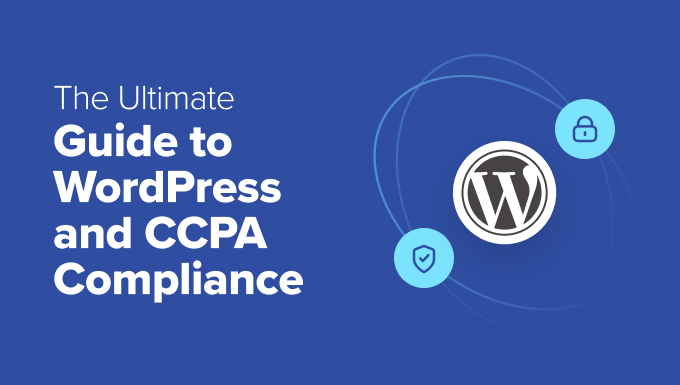
Today, many schools offer courses exclusively online, and even the ones campus-based rely heavily on digital platforms.
This transition was underway before COVID-19, but the pandemic undeniably sped things up. As technology becomes integral to higher education, it also aids accessibility by offering different learning formats and inclusive teaching materials on accessible software.
So, what does this digital transformation journey look like, and what challenges do institutions face along the way? How is it impacting students, faculty and administrators? Keep reading to discover the exciting possibilities in the future of higher education!
The Main Aims of Digital Transformation
Higher education institutions are finding out that digital transformation isn’t just about adopting new technologies. It’s about using those tools to achieve tangible goals, such as:
Increasing Efficiency and Reducing Costs
Institutions can use digital transformation to streamline operations by automating repetitive administrative tasks, freeing up more time.
Using cloud-based solutions for data storage, software applications and collaboration reduces the need for physical infrastructure and maintenance, thereby reducing costs. Paperless workflows and digital forms minimize supply expenses.
Elsewhere, AI-powered chatbots can handle routine student inquiries, reducing the workload on staff. Predictive analytics can forecast enrollment trends, helping institutions optimize resource allocation and plan effectively.
Pantheon in Action: Aims Community College
Hunter Wilson, Aims Community College’s Director of Marketing and Website Communications, inherited an outdated platform hosted on-premise, which was regularly offline for maintenance. The college worked with Pantheon and Aten Design Group to overhaul the site before migrating it to Pantheon’s cloud-based WebOps platform.
The new information architecture and cloud-based platform allowed the marketing team to abandon piecemeal strategies for scalable ones, supported by a full suite of authoring tools in Drupal.
The revamp saw online applications increase by 11%, while year-on-year conversions and total users grew by 30% and 35%, respectively. Page views increased by 40%, and bounce rates declined by 34% year-over-year.
The impact? Here’s what Wilson had to say:
“We are doing things that probably other colleges, whether they are a four-year institution or a community college, haven’t dreamed of… And Pantheon is a good partner because we don’t ever have to worry about maintenance or the website being down. It just allows us to function like a real digital marketing team should.”
Improving the Learning Environment for Students
Using a learning management system (LMS) with adaptive learning features that adjust content based on student performance allows teaching staff to provide tailored feedback and meaningful resources to students. AI-driven analytics, such as analyzing engagement and completion rates, can identify student behavior and performance patterns, enabling more impactful interventions.
By investing in digital infrastructure, institutions can offer flexible courses incorporating a full range of learning environments, from in-person to asynchronous online.
Additionally, virtual and augmented reality technologies can create immersive digital learning experiences, allowing students to explore complex concepts and environments.
Increasing Innovation and Research Opportunities
Cloud-based platforms can significantly boost research productivity, making it easier than ever to make groundbreaking discoveries.
Equip your research teams with advanced data analysis tools like machine learning and watch them unlock new insights hidden within complex datasets. Using these cutting-edge tools, researchers might stand a better chance of securing grant funding and pushing the boundaries in their fields.
Preparing for Digital Transformation
If you want your digital transformation to be more than just a buzzword, you need a strategic plan that aligns with your institution’s mission and includes input from all stakeholders.
People in leadership positions should paint a compelling vision that everyone is ready to charge full steam ahead. Create a culture where innovation thrives, and people aren’t afraid to take risks and learn from their face-plants. Keep everyone in the loop with regular updates, celebrate the wins and tackle concerns head-on.
And don’t forget to include the students in these initiatives – they’re not just along for the ride. They’re your co-pilots!
Now, you can’t expect to revolutionize your institution’s approach to education with outdated tech and infrastructure held together by duct tape and wishes – you need to invest in new technology and infrastructure.
You cannot expect your faculty and staff to magically adapt to new tools and teaching methods. Invest in training and support – workshops, online courses, peer mentoring, you name it. Make sure they have a lifeline if things go sideways.
Finally, don’t just set it and forget it. Continuously assess and improve your digital transformation efforts. Track the correct data, crunch the numbers and make data-driven decisions. Iterate, refine and keep pushing forward.
Challenges Faced by Higher Ed Institutions
Higher education institutions face challenges that can drive even the most experienced administrators to their breaking point. You might have faced one or more of the following:
- Resistance To Change: Faculty and staff may cling to traditional methods, seeing digital transformation as a threat. Combat this by clearly communicating its benefits, involving them throughout the process, and providing training and support to help them adapt and thrive in the new environment.
- Budget Constraints: The costs of digital transformation can add up quickly between updating infrastructure, buying new tech and training staff. But don’t let that scare you off. Having a clear plan and prioritizing where to allocate funds can help you navigate this financial minefield. Focus on the areas that will have the most significant impact on student success and institutional efficiency, and remember that investing in digital transformation now can pay off big time down the road.
- Data Security and Privacy: As more data flows through digital platforms, institutions need to be on their toes to fend off cyber threats while maintaining regulatory compliance. The dangers are real, from hackers trying to breach your systems to accidental data leaks. Luckily, you can secure your site by partnering with a security expert like Pantheon to stay on top of the latest threats and provide ongoing training to your team.
- Maintaining Quality of Education: For seasoned educators, providing students with a top-notch education when they’re not physically in the classroom might sound unfeasible. To succeed, you need to integrate digital tools strategically rather than for the sake of it. Engage students through interactive experiences and collaborative projects while tracking metrics like completion rates that help you maintain or improve quality.
- Conflicting Schedules and Timelines: An undertaking of this scope can upend the academic calendar, and key decision-makers might oppose it on these grounds. You can get ahead of these concerns with a change management plan that involves all major stakeholders and overhauls things piecemeal rather than all at once.
- Digital Divide: Sadly, not every student has a shiny new laptop and lightning-fast internet at their fingertips, and that can leave some struggling to keep up. However, you can level the playing field by getting creative with community partnerships, tech lending programs, hybrid learning and digital literacy boot camps.
- Compliance Considerations: Higher education institutions must adhere to various accessibility and compliance laws, which can add an extra level of complexity when trying to implement changes.
How Pantheon Aids Your Digital Transformation
Digital transformation isn’t just about slapping a fresh coat of paint on your website and calling it a day. That said, it is the best place to start when it comes to creating a great digital experience. And let’s be honest – most university websites desperately need an overhaul.
Pantheon specializes in hosting portfolios of sites, which is ideal for higher education institutions with multiple subdomains for their departments. By consolidating these various sites onto a single, robust platform, you can ensure a consistent, cohesive digital experience.
Pantheon’s WebOps platform is also designed to create collaboration and break down silos between different departments and teams. With everyone working together on the same platform, communication becomes more efficient, and workflows become more streamlined.
This collaborative approach is essential for driving the sustainable incremental changes higher education institutions need to stay competitive.
In the words of Richard Hopkins-Lutz, Web Services Manager for the College of Engineering at the Ohio State University:
“Simplifying [website] management and DevOps gave us enough time to help faculty and students with standalone applications and important technical projects. This approach increased our value to the College beyond delivering great websites.”
All this is at the heart of one of Pantheon’s core beliefs: throwing everything out and starting over can be disruptive and counterproductive. Instead, we advocate for a more gradual, iterative process that builds upon what you already have.
Pantheon doesn’t just talk the talk when it comes to security. Higher education institutions have a lot on their plates, and worrying about digital security shouldn’t be one of them. That’s why we go above and beyond to keep our clients’ sites locked down tighter than a drum.
Pantheon in Action: SUNY at Fredonia
The State University of New York (SUNY) at Fredonia retired its legacy platform for Pantheon’s WebOps alternative. With approximately 3,600 students and 200 subsites, the old way of doing things wasn’t cutting it.
As Andrea Wasiura, Project Management Professional and Web Development Manager at the university, put it:
“The main reason we went with Pantheon was that we could entrust it with our code… Previously, we spent so much time and energy just firefighting issues on the backend. I can’t even tell you how relieved I was when we moved to Pantheon, and suddenly everything was so much simpler. We could develop high-priority projects and deploy them to production faster because it all works flawlessly.”
Thanks to Pantheon’s automation and productivity tools, like Autopilot, Multidev and Upstreams, SUNY Fredonia is more agile than ever. Over 200 content creators collaborate effortlessly on the sites. Plus, creating a new website only takes 10 minutes, whereas it previously took at least one day!
Start Your Digital Transformation Today
Staying competitive in higher education means continuously improving your services and embracing new digital technologies. A clear plan, well-defined goals and stakeholder buy-in are essential for success. Finally, effective communication keeps everyone aligned and accountable.
WebOps platforms like Pantheon simplify the process, handling performance and security concerns so that you can focus on collaboration and growth.
Watch this webinar on Reimagining Your Higher Education Web Strategy to discover how Pantheon’s WebOps platform can help you create a more interactive, practical and secure online presence. Don’t miss this opportunity to elevate your institution’s digital transformation journey!






